#Paul Gonsalves
Text
Moroccan Blues - Clark Terry, Paul Gonsalves, Joe Gordon, Art Madigan
Listen to more from this album
View our full out of print music library
7 notes
·
View notes
Text
youtube
Duke Ellington - Woods [1972]: rhythm section + sax section only
Duke Ellington (p), Russell Procope, Harold Minerve, Norris Turney, Harold Ashby, Paul Gonsalves, Harry Carney (reeds), Joe Benjamin (b), Rufus Jones (dr)
Recorded in New York, August 2, 1972.
#jazz#saxophone#saxophone section#duke ellington#russell procope#harold minerve#norris turney#harold ashby#paul gonsalves#harry carney#joe benjamin#rufus jones#1972#Youtube
23 notes
·
View notes
Text
"The Wonderful World of Jazz:" Exploring John Lewis' 1961 Masterpiece
Introduction:
John Lewis, best known for his work with the Modern Jazz Quartet (MJQ), carved out a significant niche for himself in the jazz world with his sophisticated compositions and distinctive piano style. One of his most rewarding endeavors outside the MJQ is the album “The Wonderful World of Jazz,” released in 1961. This album not only showcases Lewis’ prowess as a pianist and composer…
#Arif Mardin#Benny Golson#Classic Albums#Connie Kay#Eric Dolphy#George Duvivier#Gunther Schuller#Herb Pomeroy#James Rivers#Jazz History#Jim Hall#John Lewis#Marilyn Crispell#Modern Jazz Quartet#Nat King Cole#Nesuhi Ertegun#Paul Gonsalves#The Wonderful World of Jazz#Tom Dowd#Tommy Flanagan
3 notes
·
View notes
Text
Ellington in Sweden 1963 (feat. Alice Babs)
youtube
Duke Ellington and his Orchestra: Cootie Williams, Roy Burrowes, Cat Anderson (t); Ray Nance (t,vl,v); Lawrence Brown, Buster Cooper (tb); Chuck Connors (btb); Jimmy Hamilton (cl,ts); Russell Procope (cl,as); Johnny Hodges (as); Paul Gonsalves (ts); Harry Carney (cl,bcl,as,bar); Duke Ellington (p); Ernie Shepherd (sb); Sam Woodyard (d); Alice Babs; Milt Grayson (v)
0:02 Take The A Train [feat. Alice Babs, Paul Gonsalves]
7:05 Do Nothin' Tilll You Hear From Me (New Concerto For Cootie) [feat. Lawrence Brown]
09:05 The Blues [feat. Milt Grayson]
12:43 The Eighth Veil [feat. Cat Anderson]
15:22 Star-Crossed Lovers [feat. Johnny Hodges]
19:21 Sophisticated Lady [feat. Harry Carney]
22:50 Honeysuckle Rose [feat. Jimmy Hamilton]
25:58 Take Love Easy [feat. Alice Babs]
28:58 Dancers In Love [feat. DE]
31:07 I Got It Bad [feat. Johnny Hodges]
33:56 Guitar Amour [feat. Ray Nance]
41:20 Tutti For Cootie [feat. Cootie Williams]
#jazz#duke ellington#duke ellington and his orchestra#alice babs#johnny hodges#harry carney#jimmy hamilton#ray nance#cootie williams#cat anderson#milt grayson#lawrence brown#paul gonsalves#roy burrowes#buster cooper#russel procope#chuck connors#ernie sheperd#sam woodyard#Youtube
3 notes
·
View notes
Text
Watch "Duke Ellington and His Orchestra - Blow By Blow (Goodyear 1962) [official HQ video]" on YouTube
youtube
Tenor sax solo by Paul Gonsalves
#Youtube#edward kennedy ellington#ellington#duke ellington#music#jazz#jazz music#big band jazz#big band#paul gonsalves#tenor saxophone
3 notes
·
View notes
Text

Billy Taylor – Taylor Made Jazz
Taylor Made Jazz is an album by American jazz pianist Billy Taylor. It was recorded in Chicago on November 17, 1957 and released by the Argo label. The album includes members of Duke Ellington’s orchestra performing arrangements by Johnny Pate.
Billy Taylor – piano
Willie Cook – trumpet
Clark Terry – trumpet
Britt Woodman – trombone
Johnny Hodges – alto saxophone
Paul Gonsalves – tenor saxophone
Harry Carney – baritone saxophone
Earl May – double bass
Ed Thigpen – drums
5 notes
·
View notes
Text
4th of July edit and tribute to angels and missing kids Sirita Jimmina “BooBoo” Sotelo, Emma Ochsner, Saffie-Rose Brenda Roussos, Lily Peters, Lucy Morgan, Star Hobson, Olivia Pratt Korbel, Elizabeth Shelley, Sara Sharif, Charlotte Figi, Jersey Dianne Bridgeman, Sidra Hassouna, Sloan Mattingly, Audrii Cunningham, Ava Jordan Wood, Skylar Annette Neese, Lily Rose Diaz, Riley Faith Steep, Angela Bugay, Madeleine McCann, Inga Gehricke, Summer Wells, Haleigh Cummings, Morgan Nick, Shirley Temple, Judy Garland, Judith Barsi, Heather O'Rourke, Caroline Previdi and Catherine Violet Hubbard, Louis XVII, Emily Grace Jones, Makenna Lee Elrod, Eliahna Torres, Maite Rodriguez, Jackie Cazares, Layla Salazar, JonBenèt Ramsey, Destiny Riekeberg, Johnny Cash, John Denver, Michael Jackson, Alan Rickman, Gene Wilder, Jack Albertson, Toby Keith, Bing Crosby, Abraham Lincoln, Dr. Martin Luther King Jr., Dr. Seuss, Andre the Giant, Terry Funk, Bray Wyatt, Tristyn Bailey, Andy Griffith, Don Knotts, Lee Williams, Matthew Perry, Michael Gambon, Avicii, Young Dolph, Colonel Sanders, Fred Rogers, Christopher Plummer, Ed Asner, Ana Ofelia Murguía, Paul Newman, Madge Sinclair, Robert Guillaume, Emily Grace Navarra, Lois Janes, Rose Pizem, Gracie Perry Watson, Eybymia "Effie " Babanatsou, Lily, Katelyn Nicole Davis, God told Noah it's gonna rain, Ark, Serenity Gail Elmore, Ava Cole Nichols, Emilie Alice Parker, Bella Bond, Kaylee Jade Gonsalves and Madison and Rachel Joy Scott, Barney and friends, SpongeBob SquarePants, PAW Patrol, Annie, Uncle Sam, Lord Jesus Christ, Thomas Jefferson, Assassin's creed Brotherhood, come on sunshine let these wonderful fireworks down here happen today this is for all of the missing kids and angels in heaven right now get down here lord Let us Let you know what God told Noah it's gonna rain come on angels come on saffie rose has a birthday party up in heaven now she's happy with all of the support Aubreigh Wyatt case was sad about the court but this here is for saffie rose Roussos Y'all like that? Come on let's hear it for saffie rose now I got another edit after this one more time
2 notes
·
View notes
Text

2023 Oscar nominations :
Best Picture
“All Quiet on the Western Front,” Malte Grunert, Producer
“Avatar: The Way of Water,” James Cameron and Jon Landau, Producers
“The Banshees of Inisherin,” Graham Broadbent, Pete Czernin and Martin McDonagh, Producers
“Elvis,” Baz Luhrmann, Catherine Martin, Gail Berman, Patrick McCormick and Schuyler Weiss, Producers
“Everything Everywhere All at Once,” Daniel Kwan, Daniel Scheinert and Jonathan Wang, Producers
“The Fabelmans,” Kristie Macosko Krieger, Steven Spielberg and Tony Kushner, Producers
“Tár,” Todd Field, Alexandra Milchan and Scott Lambert, Producers
“Top Gun: Maverick,” Tom Cruise, Christopher McQuarrie, David Ellison and Jerry Bruckheimer, Producers
“Triangle of Sadness,” Erik Hemmendorff and Philippe Bober, Producers
“Women Talking,” Dede Gardner, Jeremy Kleiner and Frances McDormand, Producers
Best Director
Martin McDonagh (“The Banshees of Inisherin”)
Daniel Kwan, Daniel Scheinert (“Everything Everywhere All at Once”)
Steven Spielberg (“The Fabelmans”)
Todd Field (“Tár”)
Ruben Östlund (“Triangle of Sadness”)
Best Lead Actor
Austin Butler (“Elvis”)
Colin Farrell (“The Banshees of Inisherin”)
Brendan Fraser (“The Whale”)
Paul Mescal (“Aftersun”)
Bill Nighy (“Living”)
Best Lead Actress
Cate Blanchett (“Tár”)
Ana de Armas (“Blonde”)
Andrea Riseborough (“To Leslie”)
Michelle Williams (“The Fabelmans”)
Michelle Yeoh (“Everything Everywhere All at Once”)
Best Supporting Actor
Brendan Gleeson (“The Banshees of Inisherin”)
Brian Tyree Henry (“Causeway”)
Judd Hirsch (“The Fabelmans”)
Barry Keoghan (“The Banshees of Inisherin”)
Ke Huy Quan (“Everything Everywhere All at Once”)
Best Supporting Actress
Angela Bassett (“Black Panther: Wakanda Forever”)
Hong Chau (“The Whale”)
Kerry Condon (“The Banshees of Inisherin”)
Jamie Lee Curtis (“Everything Everywhere All at Once”)
Stephanie Hsu (“Everything Everywhere All at Once”)
Best Adapted Screenplay
“All Quiet on the Western Front,” Screenplay by Edward Berger, Lesley Paterson & Ian Stokell
“Glass Onion: A Knives Out Mystery,” Written by Rian Johnson
“Living,” Written by Kazuo Ishiguro
“Top Gun: Maverick,” Screenplay by Ehren Kruger and Eric Warren Singer and Christopher McQuarrie; Story by Peter Craig and Justin Marks
“Women Talking,” Screenplay by Sarah Polley
Best Original Screenplay
“The Banshees of Inisherin,” Written by Martin McDonagh
“Everything Everywhere All at Once,” Written by Daniel Kwan & Daniel Scheinert
“The Fabelmans,” Written by Steven Spielberg & Tony Kushner
“Tár,” Written by Todd Field
“Triangle of Sadness,” Written by Ruben Östlund
All Quiet on the Western Front”, James Friend
“Bardo, False Chronicle of a Handful of Truths,” Darius Khondji
“Elvis,” Mandy Walker
“Empire of Light,” Roger Deakins
“Tár,” Florian Hoffmeister
Best Documentary Feature Film
“All That Breathes,” Shaunak Sen, Aman Mann and Teddy Leifer
“All the Beauty and the Bloodshed,” Laura Poitras, Howard Gertler, John Lyons, Nan Goldin and Yoni Golijov
“Fire of Love,” Sara Dosa, Shane Boris and Ina Fichman
“A House Made of Splinters,” Simon Lereng Wilmont and Monica Hellström
“Navalny,” Daniel Roher, Odessa Rae, Diane Becker, Melanie Miller and Shane Boris
Best Documentary Short Film
“The Elephant Whisperers,” Kartiki Gonsalves and Guneet Monga
“Haulout,” Evgenia Arbugaeva and Maxim Arbugaev
“How Do You Measure a Year?” Jay Rosenblatt
“The Martha Mitchell Effect,” Anne Alvergue and Beth Levison
“Stranger at the Gate,” Joshua Seftel and Conall Jones
Best Film Editing
“The Banshees of Inisherin,” Mikkel E.G. Nielsen
“Elvis,” Matt Villa and Jonathan Redmond
“Everything Everywhere All at Once,” Paul Rogers
“Tár,” Monika Willi
“Top Gun: Maverick,” Eddie Hamilton
Best International Feature Film
“All Quiet on the Western Front” (Germany)
“Argentina, 1985” (Argentina)
“Close” (Belgium)
“EO” (Poland)
“The Quiet Girl” (Ireland)
Best Original Song
“Applause” from “Tell It Like a Woman,” Music and Lyric by Diane Warren
“Hold My Hand” from “Top Gun: Maverick,” Music and Lyric by Lady Gaga and BloodPop
“Lift Me Up” from “Black Panther: Wakanda Forever,” Music by Tems, Rihanna, Ryan Coogler and Ludwig Goransson; Lyric by Tems and Ryan Coogler
“Naatu Naatu” from “RRR,” Music by M.M. Keeravaani; Lyric by Chandrabose
“This Is a Life” from “Everything Everywhere All at Once,” Music by Ryan Lott, David Byrne and Mitski; Lyric by Ryan Lott and David Byrne
Best Production Design
“All Quiet on the Western Front,” Production Design: Christian M. Goldbeck; Set Decoration: Ernestine Hipper
“Avatar: The Way of Water,” Production Design: Dylan Cole and Ben Procter; Set Decoration: Vanessa Cole
“Babylon,” Production Design: Florencia Martin; Set Decoration: Anthony Carlino
“Elvis,” Production Design: Catherine Martin and Karen Murphy; Set Decoration: Bev Dunn
“The Fabelmans,” Production Design: Rick Carter; Set Decoration: Karen O’Hara
Best Visual Effects
“All Quiet on the Western Front,” Frank Petzold, Viktor Müller, Markus Frank and Kamil Jafar
“Avatar: The Way of Water,” Joe Letteri, Richard Baneham, Eric Saindon and Daniel Barrett
“The Batman,” Dan Lemmon, Russell Earl, Anders Langlands and Dominic Tuohy
“Black Panther: Wakanda Forever,” Geoffrey Baumann, Craig Hammack, R. Christopher White and Dan Sudick
“Top Gun: Maverick,” Ryan Tudhope, Seth Hill, Bryan Litson and Scott R. Fisher
Best Animated Feature Film
“Guillermo del Toro’s Pinocchio,” Guillermo del Toro, Mark Gustafson, Gary Ungar and Alex Bulkley
“Marcel the Shell With Shoes On,” Dean Fleischer Camp, Elisabeth Holm, Andrew Goldman, Caroline Kaplan and Paul Mezey
“Puss in Boots: The Last Wish,” Joel Crawford and Mark Swift
“The Sea Beast,” Chris Williams and Jed Schlanger
“Turning Red,” Domee Shi and Lindsey Collins
Best Animated Short Film
“The Boy, the Mole, the Fox and the Horse,” Charlie Mackesy and Matthew Freud
“The Flying Sailor,” Amanda Forbis and Wendy Tilby
“Ice Merchants,” João Gonzalez and Bruno Caetano
“My Year of Dicks,” Sara Gunnarsdóttir and Pamela Ribon
“An Ostrich Told Me the World Is Fake and I Think I Believe It,” Lachlan Pendragon
Best Costume Design
“Babylon,” Mary Zophres
“Black Panther: Wakanda Forever,” Ruth Carter
“Elvis,” Catherine Martin
“Everything Everywhere All at Once,” Shirley Kurata
“Mrs. Harris Goes to Paris,” Jenny Beavan
Best Live Action Short
“An Irish Goodbye,” Tom Berkeley and Ross White
“Ivalu,” Anders Walter and Rebecca Pruzan
“Le Pupille,” Alice Rohrwacher and Alfonso Cuarón
“Night Ride,” Eirik Tveiten and Gaute Lid Larssen
“The Red Suitcase,” Cyrus Neshvad
Best Makeup and Hairstyling
“All Quiet on the Western Front,” Heike Merker and Linda Eisenhamerová
“The Batman,” Naomi Donne, Mike Marino and Mike Fontaine
“Black Panther: Wakanda Forever,” Camille Friend and Joel Harlow
“Elvis,” Mark Coulier, Jason Baird and Aldo Signoretti
The Whale,” Adrien Morot, Judy Chin and Anne Marie Bradley
Best Original Score
“All Quiet on the Western Front,” Volker Bertelmann
“Babylon,” Justin Hurwitz
“The Banshees of Inisherin,” Carter Burwell
“Everything Everywhere All at Once,” Son Lux
“The Fabelmans,” John Williams
Best Sound
“All Quiet on the Western Front,” Viktor Prášil, Frank Kruse, Markus Stemler, Lars Ginzel and Stefan Korte
“Avatar: The Way of Water,” Julian Howarth, Gwendolyn Yates Whittle, Dick Bernstein, Christopher Boyes, Gary Summers and Michael Hedges
“The Batman,” Stuart Wilson, William Files, Douglas Murray and Andy Nelson
“Elvis,” David Lee, Wayne Pashley, Andy Nelson and Michael Keller
“Top Gun: Maverick,” Mark Weingarten, James H. Mather, Al Nelson, Chris Burdon and Mark Taylor
18 notes
·
View notes
Text
B-6 : Oscars 2023 - Predictions vs Reality
The 95th Academy Awards, a.k.a. The Oscars® took place today. The ceremony was full of obvious wins (and some unexpected ones too). The best part was - this year’s Oscars telecast had zero incidents (as the host Jimmy Kimmel points out in the end).
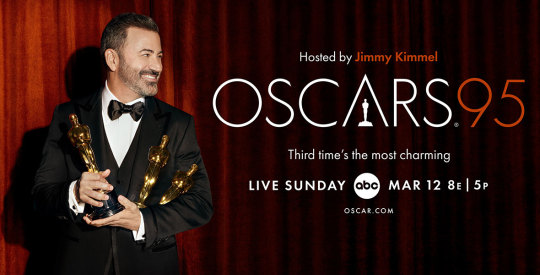
Amid all of this, here's a look at the predicted winners and the actual winners (in order of their presentations):-
Best Animated Feature Film
Prediction: Guillermo del Toro's Pinocchio (Guillermo del Toro, Mark Gustafson, Gary Ungar, and Alex Bulkley)
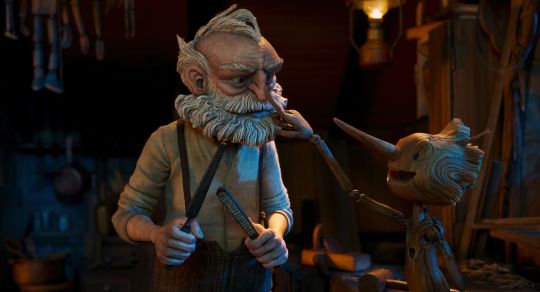
Reality: Guillermo del Toro's Pinocchio (Guillermo del Toro, Mark Gustafson, Gary Ungar, and Alex Bulkley)
Best Supporting Actor
Prediction: Ke Huy Quan (Everything Everywhere All at Once)
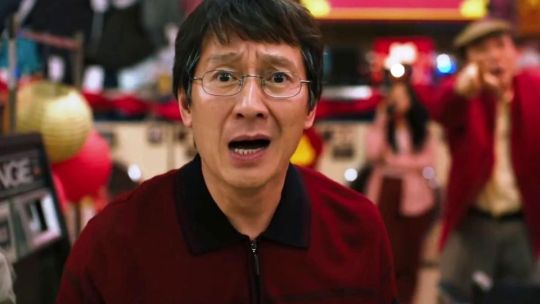
Reality: Ke Huy Quan (Everything Everywhere All at Once)
Best Supporting Actress
Prediction: Angela Bassett (Black Panther: Wakanda Forever)
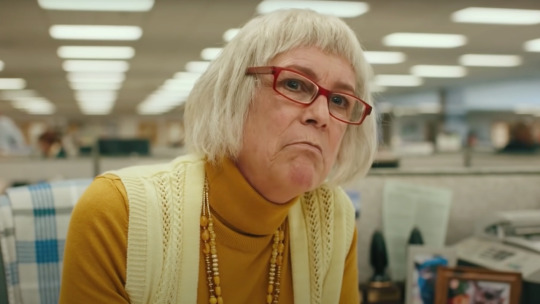
Reality: Jamie Lee Kurtis (Everything Everywhere All at Once)
Best Documentary Feature Film
Prediction(s): All the Beauty and the Bloodshed (Laura Poitras, Howard Gertler, John Lyons, Nan Goldin, and Yoni Golijov)/A House Made of Splinters ( Simon Lereng Wilmont and Monica Hellström)
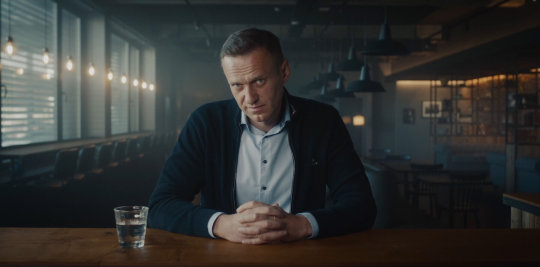
Reality: Navalny (Daniel Roher, Odessa Rae, Diane Becker, Melanie Miller, and Shane Boris)
Best Live Action Short Film
Prediction: An Irish Goodbye (Tom Berkely and Ross White)

Reality: An Irish Goodbye (Tom Berkely and Ross White)
Best Cinematography
Prediction: All Quiet on the Western Front (James Friend)

Reality: All Quiet on the Western Front (James Friend)
Best Makeup & Hairstyling
Prediction: Elvis (Mark Coulier, Jason Baird, and Aldo Signoretti)
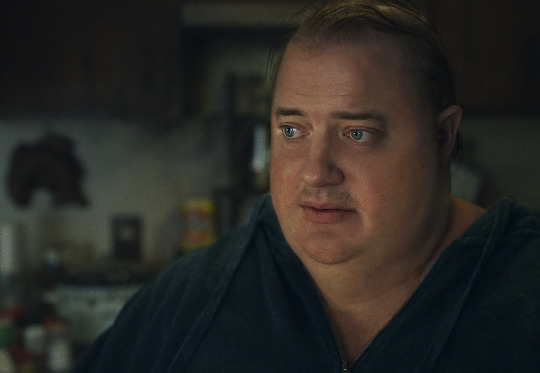
Reality: The Whale (Adrien Morot, Judy Chin, and Anne Marie Bradley)
Best Costume Designing
Prediction: Elvis (Catherine Martin)
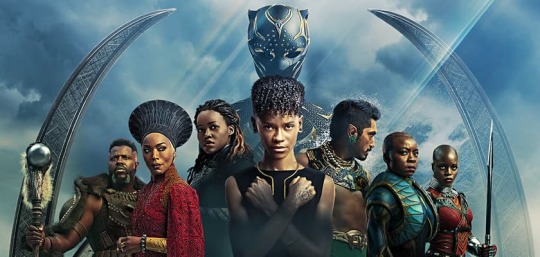
Reality: Black Panther: Wakanda Forever (Ruth E. Carter)
Best International Feature Film
Prediction(s): All Quiet on the Western Front (Germany - Edward Berger)/Argentina, 1985 (Argentina - Santiago Mitre)
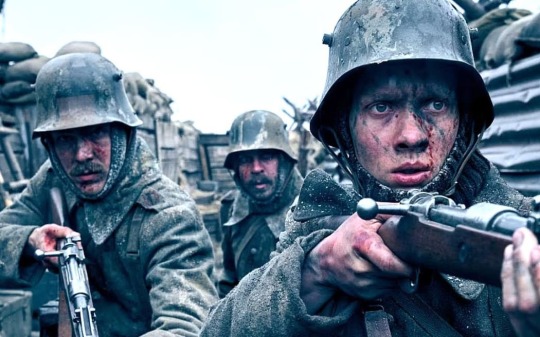
Reality: All Quiet on the Western Front (Germany - Edward Berger)
Best Documentary Short Film
Prediction(s): The Elephant Whispers (Kartiki Gonsalves and Guneet Monga)/The Martha Mitchell Effect (Anne Alvergue and Beth Levison)

Reality: The Elephant Whispers (Kartiki Gonsalves and Guneet Monga)
Best Animated Short Film
Prediction: My Year of Dicks (Sara Gunnarsdóttir and Pamela Ribon)
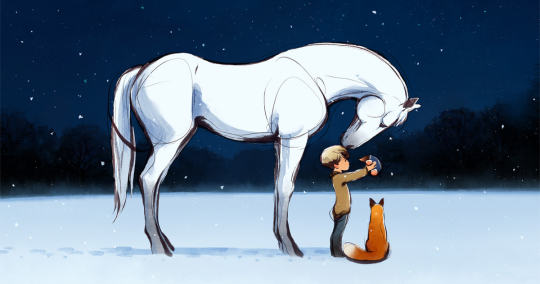
Reality: The Boy, the Mole, the Fox and the Horse (Charlie Mackesy and Matthew Freud)
Best Production Design
Prediction: Elvis (Production Design - Catherine Martin and Karen Murphy; Set Decoration - Bev Dunn)

Reality: All Quiet on the Western Front (Production Design - Christian M. Goldbeck; Set Decoration - Ernestine Hipper)
Best Original Score
Prediction(s): The Banshees of Inishrein (Carter Burwell)/Babylon (Justin Hurwitz)

Reality: All Quiet on the Western Front (Volker Bertelmann)
Best Visual Effects
Prediction: Avatar: The Way of Water (Joe Letteri, Richard Baneham, Eric Saindon, and Daniel Barrett)

Reality: Avatar: The Way of Water (Joe Letteri, Richard Baneham, Eric Saindon, and Daniel Barrett)
Best Original Screenplay
Prediction(s): The Banshees of Inisherin (Martin McDonagh)/Everything Everywhere All at Once (Daniel Kwan and Daniel Scheinert)
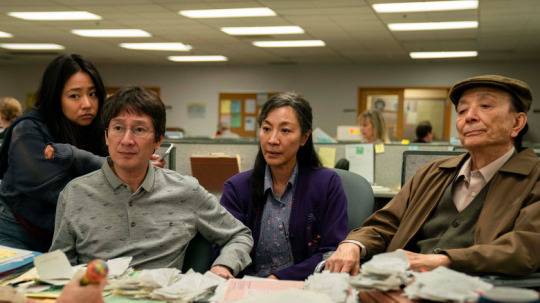
Reality: Everything Everywhere All at Once (Daniel Kwan and Daniel Scheinert)
Best Adapted Screenplay
Prediction: Women Talking (Sarah Polley - based on the novel by Miriam Toews)
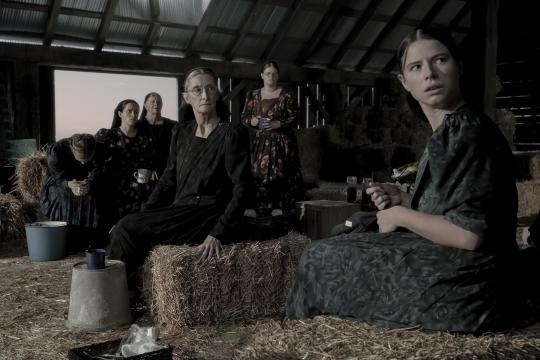
Reality: Women Talking (Sarah Polley - based on the novel by Miriam Toews)
Best Sound
Prediction: Top Gun: Maverick (Mark Weingarten, James H. Mather, Al Nelson, Chris Burdon, and Mark Taylor)
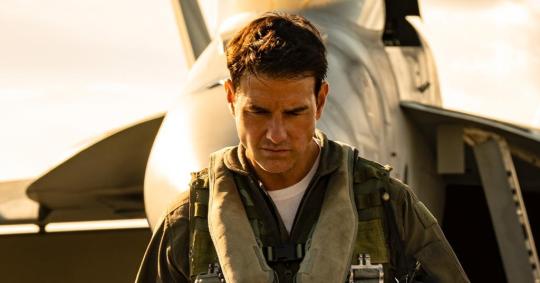
Reality: Top Gun: Maverick (Mark Weingarten, James H. Mather, Al Nelson, Chris Burdon, and Mark Taylor)
Best Original Song
Prediction: "Naatu Naatu" (RRR - Music by M. M. Keeravani; Lyrics by Chandrabose)

Reality: "Naatu Naatu" (RRR - Music by M. M. Keeravani; Lyrics by Chandrabose)
Best Film Editing
Prediction: Top Gun: Maverick (Eddie Hamilton)
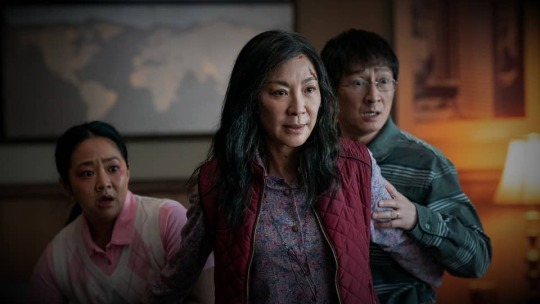
Reality: Everything Everywhere All at Once (Paul Rogers)
Best Director
Prediction: Steven Spielberg (The Fabelmans)
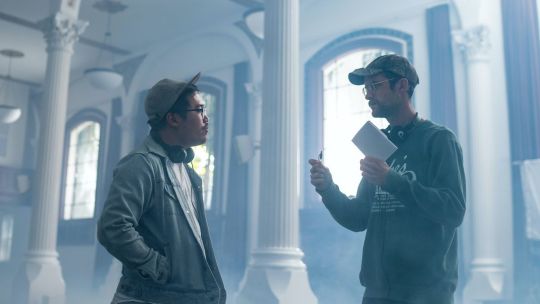
Reality: Daniel Kwan and Daniel Scheinert (Everything Everywhere All at Once)
Best Actor
Prediction(s): Austin Butler (Elvis)/Colin Farrell (The Banshees of Inisherin)/Brendan Fraser (The Whale)
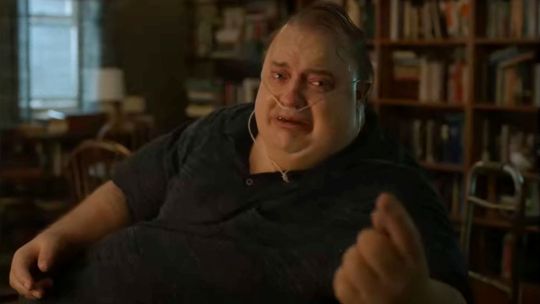
Reality: Brendan Fraser (The Whale)
Best Actress
Prediction(s): Cate Blanchett (Tár)/Michelle Yeoh (Everything Everywhere All at Once)
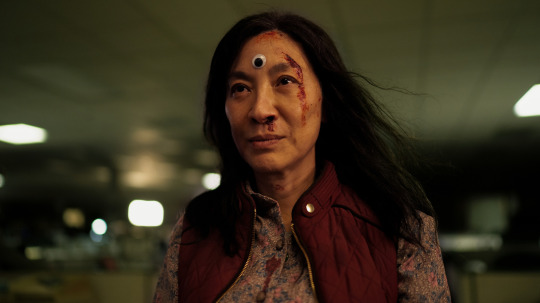
Reality: Michelle Yeoh (Everything Everywhere All at Once)
Best Picture
Prediction: The Fabelmans

Reality: Everything Everywhere All at Once
Which categories met your expectations? Don’t forget to share them in the comments below.
#oscars#2023 oscars#academy awards#predictions vs reality#95th academy awards#95th oscars#everything everywhere all at once#the fabelmans#top gun maverick#all quiet on the western front#tár#avatar the way of water#black panther wakanda forever#the whale#women talking#triangle of sadness#elvis#the banshees of inisherin
5 notes
·
View notes
Text
LÉGENDES DU JAZZ
LUCKY THOMPSON, LE SAXOPHONISTE QUI N’AVAIT PAS VRAIMENT MÉRITÉ SON SURNOM
"Lucky had that same thing that Paul Gonsalves had, that melodic smoothness. He wasn't rough like Ben Webster, and he didn't play in the Lester Young style. He was a beautiful balladeer. But he played with all the modernists."
- Johnny Griffin
Né le 16 juin 1924 à Columbia, en Caroline du Sud, Eli ‘’Lucky’’ Thompson était le fils d’un emballeur de viande. Thompson a déménagé à Detroit avec sa famille durant son enfance. Élevé par son père après la mort de sa mère, Thompson devait son surnom de ‘’Lucky’’ à un chandail qu’il avait l’habitude de porter sur lequel figurait cette inscription.
Thompson avait commencé à s’intéresser à la musique après avoir entendu Coleman Hawkins à la radio.
Thompson étant issu d’un milieu pauvre, il s’était entraîné à jouer du saxophone sur un manche à balai jusqu’à ce qu’il ait les moyens de s’acheter son propre instrument à l’âge de quinze ans. Comme son fils Daryl l’avait expliqué plus tard: "His father got fed up seeing this kid fingering this piece of wood and bought him a cheap, pawnshop kind of saxophone."
Parmi les principales influences de Thompson à l’époque, on retrouvait le saxophoniste ténor Don Byas.
Travailleur acharné, Thompson pratiquait huit heures par jour. Devenu suffisamment habile, il s’était finalement joint au King's Aces Big Band, un groupe notamment composé du vibraphoniste Milt Jackson qui était devenu plus tard un de ses plus précieux collaborateurs.
Après avoir obtenu son diplôme du Cass High School en 1942, Thompson s’était joint à Ted Buckner, l’ancien saxophoniste alto de Jimmie Lunceford, au Club 666, dans le quartier noir de Detroit, et aux Bama State Collegians d’Erskine Hawkins. L’année suivante, il était entré dans le big band de Lionel Hampton.
DÉBUTS DE CARRIÈRE
En août 1943, Thompson avait quitté New York pour participer à une tournée de quatre mois avec Hampton. Après avoir passé six mois avec Hampton, Thompson s’était joint à l’éphémère big band de Billy Eckstine, ce qui lui avait permis de jouer aux côtés de Dizzy Gillespie et Charlie Parker. Après avoir travaillé avec Don Redman, Lucky Millinder et Sid Catlett, Thompson avait connu une véritable consécration lorsqu’il était entré dans l’orchestre de Count Basie en 1944 comme successeur de son idole Don Byas. Même s’il jouait aux côtés de géants comme Lester Young dans le groupe de Basie, Thompson était déterminé à ne pas se laisser intimider. Comme l’écrivait le saxophoniste et chercheur Loren Schoenberg: "When it was Thompson's turn in that same chair, he went out of his way to assert his preference for a more macho approach."
Après quitté l’orchestre de Basie et avoir joué dans des groupes de Rhythm & Blues, Thompson avait entrepris une une carrière de musicien de bebop et de hard bop, collaborant notamment avec des musiciens établis comme Kenny Clarke, Miles Davis, Dizzy Gillespie et son compatriote de Detroit Milt Jackson. Comme l’écrivait le critique Ben Ratliff, Thompson avait fait le lien entre l’époque swing et le style plus cérébral et complexe du bebop. Ratliff avait ajouté: ‘’His sophisticated, harmonically abstract approach to the tenor saxophone built off that of Don Byas and Coleman Hawkins; he played with beboppers, but resisted Charlie Parker's pervasive influence."
Dès le début de sa carrière, Thompson avait démontré une approche très originale de l’improvisation. Sa tonalité, qui rappelait énormément le style de Ben Webster, plus particulièrement dans les passages plus ‘’rugueux’’ et sensuels, avait aussi été très influencée par les premiers enregistrements de son maître à penser Don Byas.
Thompson a fait ses débuts sur disque en mars 1944 avec le trompettiste Oran ‘’Hot Lips’’ Page.
Après avoir quitté l’orchestre de Basie en octobre 1945, Thompson s’était installé à Los Angeles où il avait enregistré, et probablement écrit des arrangements, pour la maison de disques Exclusive, notamment pour l’ancien chanteur de Duke Ellington, Herb Jeffries. Lorsque le sextet de Charlie Parker et Dizzy Gillespie avait fait un séjour à Los Angeles pour jouer au club de Billy Berg, Thompson avait été recruté par le trompettiste afin de servir de remplaçant éventuel à Parker dont les problèmes de dépendance étaient devenus incontrôlables. Après avoir entendu le groupe jouer pour la première fois, Thompson avait déclaré: "This is crazy music." Une semaine plus tard, Thompson avait fait sa première apparition sur scène avec le groupe. À Los Angeles, Thompson s’était produit avec les plus importants musiciens bebop du moment, dont le contrebassiste Charles Mingus, le pianiste Michael ‘’Dodo’’ Marmarosa et le saxophoniste Boyd Raeburn. Thompson avait passé deux ans à Los Angeles, où il avait participé à plus de cent sessions d’enregistrement avec des artistes aussi diversifiés que Dinah Washington et Boyd Raeburn. Devenu une grande vedette, Thompson avait également été élu meilleur artiste de la relève par le magazine Esquire en 1947.
De retour à New York, Thompson avait participé à une des sessions les plus célèbres de Parker et Gillespie pour les disques Dial, le 28 mars 1946. À la fin des années 1940, Thompson avait aussi enregistré avec son épouse, la chanteuse Thelma Lowe (qui était surnommée Thelma Love à l’époque). En 1947, Thompson avait également fait une apparition dans le film "New Orleans" aux côtés de Billie Holiday et Louis Armstrong.
Thompson avait continué de démontrer ses habiletés d’accompagnateur dans le cadre de plusieurs albums enregistrés au milieu des années 1950, notamment sur le disque ‘’Cuban Fire!’’ de Stan Kenton et d’autres albums enregistrés sous son propre nom. En 1954, Thompson a également participé à l’enregistrement de l’album ‘’Walkin’’’ de Miles Davis . Considéré comme un des albums marquants de Davis, le disque mettait également en vedette le pianiste Horace Silver, le joueur de trombone J.J. Johnson et le batteur Kenny Clarke. Le solo de Thompson sur le standard "Blue 'n' Boogie" est d’ailleurs considéré comme un des faits saillants de l’album.
Thompson a également enregistré comme leader pour les disques Vogue (à Paris), ABC Paramount et Prestige, ainsi que comme accompagnateur pour les disques Savoy avec Milt Jackson.
Au début des années 1950, Thompson avait dirigé l’orchestre-maison du club Savoy de New York. Après s’être produit au Festival de jazz de Nice et avoir enregistré avec Thelonious Monk, Thompson s’était joint à l'orchestre de Stan Kenton en 1956.
Plutôt amer envers l’industrie de la musique, Thompson avait éventuellement décrit les promoteurs, les producteurs, les éditeurs de musique et les compagnies de disques comme des ‘’parasites’’ et des ‘’vautours.’’ Les opinions tranchées de Thompson sur les agissements des magnats de l’industrie du disque l’avaientt éventuellement empêché de devenir une grande vedette du jazz au même titre que des saxophonistes comme Coleman Hawkins, Ben Webster et Lester Young.
Malgré sa personnalité controversée, Thompson avait enregistré plusieurs albums comme leader, dont "Tricotism" en 1956 (avec son groupe Lucky Seven) et "Lucky Strikes" en 1964. Il avait aussi accompagné plusieurs sommités du jazz comme Dinah Washington (1945), Thelonious Monk (1952), Miles Davis (album "Walkin"', 1954), Oscar Pettiford et Stan Kenton (1956).
En 1958, à la suite d’un conflit avec le gérant de Louis Armstrong, Joe Glaser (apparemment au sujet de l’ordre dans lequel les deux musiciens devaient descendre de l’avion), Thompson avait décidé de s’acheter une petite ferme dans le Michigan et de s’y installer avec sa famille. Toujours généreux envers ses collaborateurs, Thompson n’en avait jamais voulu personnellement à Armstrong, et l’avait toujours désigné respectueusement sous le terme de ‘’M. Armstrong.’’
Après avoir tenté en vain de devenir éditeur de musique, Thompson avait aussi fait de fréquents aller-retour en France, où il avait vécu et enregistré de 1957 à 1962, collaborant avec des artistes comme Martial Solal, Henri Renaud ou Guy Laffite. En 1962, il s’était également produit au célèbre club de Ronnie Scott à Londres. Durant cette période, Thompson avait aussi commencé à jouer du saxophone soprano, devenant ainsi un des premiers membres de sa génération à adopter cet instrument. Même si John Coltrane est souvent reconnu pour avoir sorti le saxophone soprano de l’ombre au début des années 1960, Thompson et Steve Lacy avaient adopté cet instrument bien avant Coltrane. Thompson avait également profité de son séjour en Europe pour perfectionner ses solos.
De retour à New York en 1962, Thompson avait signé un contrat avec les disques Prestige avec qui il avait enregistré les albums ‘’Happy Days Are Here Again”, “Plays Jerome Kern and No More” et “Lucky Strikes” en 1964. Après avoir enregistré avec d’autres maisons de disques en 1965, Thompson avait participé à l’enregistrement de l’album “Lucky Meets Tommy” avec le pianiste Tommy Flanagan.
Après avoir vécu à New York durant quelques années, Thompson s’est établi à Lausanne, en Suisse, où il a résidé de 1968 à 1970 et où il a enregistré plusieurs albums dont ‘’A Lucky Songbook in Europe’’ (1969).
Thompson avait brièvement enseigné au Dartmouth College et à l’Université Yale en 1973-74, mais découragé par l’approche de la musique préconisée dans les universités, il avait finalement décidé d’abandonner définitivement sa carrière musicale. Thompson avait enregistré ses derniers albums pour la petite étiquette Groove Merchant sous le titre de “Goodbye Yesterday” (1972) et “I Offer You” (1973).
DERNIÈRES ANNÉES
Si on sait très peu de choses sur les activités de Thompson à partir du milieu des années 1970, on croit généralement qu’il avait vécu brièvement sur l’île Manitoulin, en Ontario, et dans différentes villes des États-Unis comme Atlanta, Savannah, en Georgie, ou Denver, au Colorado. Thompson a passé les dernières années de sa vie à Seattle, dans l’État de Washington.
Après avoir occupé divers petits emplois, Thompson serait devenu sans-abri au début des années 1990. Il vivait comme un ermite dans les bois, dans son automobile ou dans des abris fournis par certains de ses amis. Certaines rumeurs avaient même laissé entendre que Thompson s’était construit une cabane de bois rond au Canada et qu’il avait été réduit à se nourrir de racines pour survivre. À l’époque, Thompson était si démuni financièrement qu’il aurait même vendu son saxophone pour payer ses soins dentaires. À une occasion, il avait même été sauvagement battu à Atlanta. C’est alors qu’il avait été recueilli par des étrangers qui avaient été informés de son triste sort. Mais il était déjà trop tard. Souffrant de démence et de paranoïa, Thompson avait fait plusieurs séjours dans les hôpitaux à partir de 1994.
Atteint de la maladie d’Alzheimer, Lucky Thompson est décédé à Seattle le 30 juillet 2005. Il était âgé de 81 ans. Thompson laissait dans le deuil son fils Daryl, sa fille Jade Thompson-Fredericks ainsi que deux petits-enfants. Depuis une dizaine d’années, Thompson vivait au Washington Center for Comprehensive Rehabilitation de Seattle. C’est là qu’il s’était éteint en 2005.
Thompson avait épousé la chanteuse Thelma Lowe. Le couple avait eu un fils, le futur guitariste Daryl Thompson. Ce dernier avait joué avec les artistes reggae Peter Tosh et Black Uhuru avant de se lancer dans une carrière de musicien de jazz à la fin des années 1980. Lorsque Thelma était morte d’un anévrisme en 1963, sa belle-famille ne l’avait jamais pardonné à Thompson et lui avait presque fait perdre la garde de ses enfants après l’avoir poursuivi en justice. Ébranlé par la mort successive à la fin des années 1960 du guitariste Wes Montgomery, du compositeur Billy Strayhorn et de Martin Luther King Jr., Thompson avait finalement décidé d’envoyer ses enfants en Suisse où il avait décidé de relancer sa carrière.
Considéré comme l’un des meilleurs saxophonistes ténor de l'histoire du jazz aux côtés de Coleman Hawkins et Lester Young, Thompson était caractérisé par un phrasé très doux et très précis. Excellent improvisateur, Thompson était particulièrement reconnu pour son jeu sophistiqué et pour son talent pour les balades. Doté d’un style très personnel, Thompson avait influencé plusieurs musiciens de jazz, dont le saxophoniste Johnny Griffin, qui avait déclaré à son sujet: "Lucky had that same thing that Paul Gonsalves had, that melodic smoothness. He wasn't rough like Ben Webster, and he didn't play in the Lester Young style. He was a beautiful balladeer. But he played with all the modernists." Même si Thompson n’était pas vraiment considéré comme un innovateur, il avait toujours su démontrer une grande dextérité et une énorme capacité d’adaptation au cours de sa carrière. Son jeu voluptueux et sensuel était particulièrement mis en évidence sur la pièce "Just One More Chance" enregistrée en 1947.
La vie de Lucky Thompson était d’autant plus mystérieuse qu’on l’avait vu rarement en public à la fin de sa vie. Même ses plus proches amis avaient parfois de la difficulté à le trouver. Le batteur Kenny Washington se rappelait avoir vu Thompson assister à un de ses concerts avec le groupe de Johnny Griffin au club Jazz Alley de Seattle en 1993. Après avoir assisté au spectacle, Thompson avait brièvement discuté avec les musiciens avant de repartir à pied vers son lieu de résidence de l’époque dans le quartier de Beacon Hill, à un peu plus de trois miles de distance.
©-2023-2024, tous droits réservés, Les Productions de l’Imaginaire historique
1 note
·
View note
Text

Duke Ellington - Ellington at Newport (1956)
Recorded sixty-eight years ago, on July 7-8, 1956, was one of the legendary performances in music history, Ellington at Newport. In 1956, big band jazz and Duke Ellington’s career were flagging, and the orchestra was playing in places like ice skating rinks just to stay busy, but this performance and the subsequent album changed all that. Following the performance, Duke—who was not under contract at the time of the concert—was signed to Columbia Records, he was featured on the cover of Time magazine, and the resurgence lasted for the rest of his career.
The centerpiece of the concert is an astonishing 27-chorus solo by tenor saxophonist Paul Gonsalves in “Diminuendo and Crescendo in Blue,” that brought the crowd to its feet and provoked dancing in aisles among the normally staid Newport crowd.
However, in an interesting twist, in 1996, newly discovered Library of Congress tapes revealed that the original album was only about forty percent actual live recordings—the rest was recorded in the studio after the fact and mixed with crowd noise and canned applause. Always the perfectionist, Ellington felt the band was under-rehearsed in parts, and the famed Gonsalves solo had been played into the wrong microphone and was almost completely inaudible at times. So, the band recreated large portions of the concert in the studio. While the original performance was painstakingly pieced back together in 1999, rather than diminishing the original record, it only added to the mystique and mythology of the legend.
#Ellington at newport#duke ellington#music#jazz#diminuendo and crescendo in blue#newport Rhode island#anniversaries
0 notes
Text
I've Found A New Baby - Clark Terry, Paul Gonsalves, Joe Gordon, Art Madigan
Listen to more from this album
View our full out of print music library
4 notes
·
View notes
Text




Duke Ellington & his Orchestra with Johnny Hodges, Paul Gonsalves & Cat Anderson - The Ed Sullivan Show (1966)
26 notes
·
View notes
Text
Paul Gonsalves: The Tenor Titan of Jazz
Introduction:
The world of jazz is populated by many legendary figures, but few have left as indelible a mark as tenor saxophonist Paul Gonsalves. Renowned for his mesmerizing solos and his pivotal role in Duke Ellington’s orchestra, Gonsalves’ career spanned several decades, marked by both incredible highs and challenging lows. This blog post delves into the life and legacy of Paul Gonsalves,…
#Coleman Hawkins#Count Basie#Dizzy Gillespie#Duke Ellington#Ellington at Newport#Jazz History#Jazz Saxophonists#Johnny Hodges#Lester Young#Paul Gonsalves#Ray Nance#Sabby Lewis Orchestra#Tell It the Way It Is!
2 notes
·
View notes
Text
Por cierto..Paco CAMINO de 83 años nació en CAMAS como SERGIO RAMOS O el torero CURRO ROMERO..su hijo RAFI tuvo un extraño ROMANCE con SAMANTHA "FOX" y ANA OBREGON [cuyo AMOR DE SU VIDA o 1er español en NBA se mató con 27 años tras chocar con el marido de MILAGROS Romero que acababa de dar a LUZ pues cruzó sin control 8 carriles de M_30 o AVDA DE LA PAZ al incorporarse por el LIMITE del barrio SAN JUAN BAUTISTA] para luego tener un JODIDO DIVORCIO..es el 2do TORERO que más veces abrió la PUERTA GRANDE de LAS VENTAS con 12 veces..detrás del VITI con 14 que estuvo en la única corrida [BOGOTA] en la que los 3 TOREROS indultaron a 3 TOROS como también fue PALOMO "LINARES" [=LOCALIDAD donde nació VIRGINIA MAESTRO] que murió con 69 años tras liarse con una JUEZA porque quería su LIBERTAD de Marina DANKO
Francisco Almagro escribió la letra de S.M. El Viti; pasodoble torero cuya música fue compuesta por M. Villacañas y se publicó por la Unión Musical Española en 1965.[5] Señalar además el pasodoble Aquí está El Viti del autor Felipe Blanco Aguirre.
En cuanto al jazz, en 1960 Duke Ellington grabó los arreglos para piano de El Viti, canción del compositor y músico de jazz Gerald Wilson. En 1966 Jack Wilson (pianista de jazz) realizó una versión a la trompeta de la misma llamada The Matador, en homenaje al Viti, que es la única que ha grabado con la orquesta de Duke Ellington.[6] Paul Gonsalves, otro jazzista, grabó también con la orquesta de Duke Ellington otra versión en 1962 de El Matador: El Viti que fue publicado en el disco Jazz Masters (100 Ans de Jazz) de estilo Big Band, por el sello Record.
Palomo LINARES definió su matrimonio COMO UN MAL SUEÑO jaja..por cierto..fotografié en B_RIGHT_ON en sep2011 la revista HOLA con MARINA DANKO [que luego se lio con un MILLONARIO] hablando de su DIVORCIO tras fotografiarme en un ESCAPARATE con CDS como KICK de INXS bajo uno de ULTRAVOX! [VOZ DEL MAS ALLA] que fundó CHRIS CROSS tras TIGER LILY=hija de Suicidado con autoaxfisia erotica HUTCHENCE de INXS con la suicidada por sobredosis PAULA YATES madre de las 3 hijas de Bob Geldof como la muerta por SOBREDOSIS "PEACHES"






0 notes
Text
Duke Ellington And His Orchestra Featuring Paul Gonsalves - Featuring Paul Gonsalves (LP, Album)
Vinyl(VG+) Sleeve(VG+) Insert(VG+) Obi(missing) / missing Obi 帯なし /
コンディション 盤 : Very Good Plus (VG+)
コンディション ジャケット : Very Good Plus (VG+)
コンディションの表記について [ M > M- > VG+ > VG > G+ > G > F > P ]
レーベル : Fantasy – VIJ 6449
フォーマット : Vinyl, LP, Album
生産国 : Japan
発売年 : 1985
ジャンル : Jazz
スタイル :
収録曲 :
A1. C Jam Blues A2. Take The “A” Train A3. Happy-Go-Lucky Local A4. Jam With Sam B1. Caravan B2.…
View On WordPress
0 notes